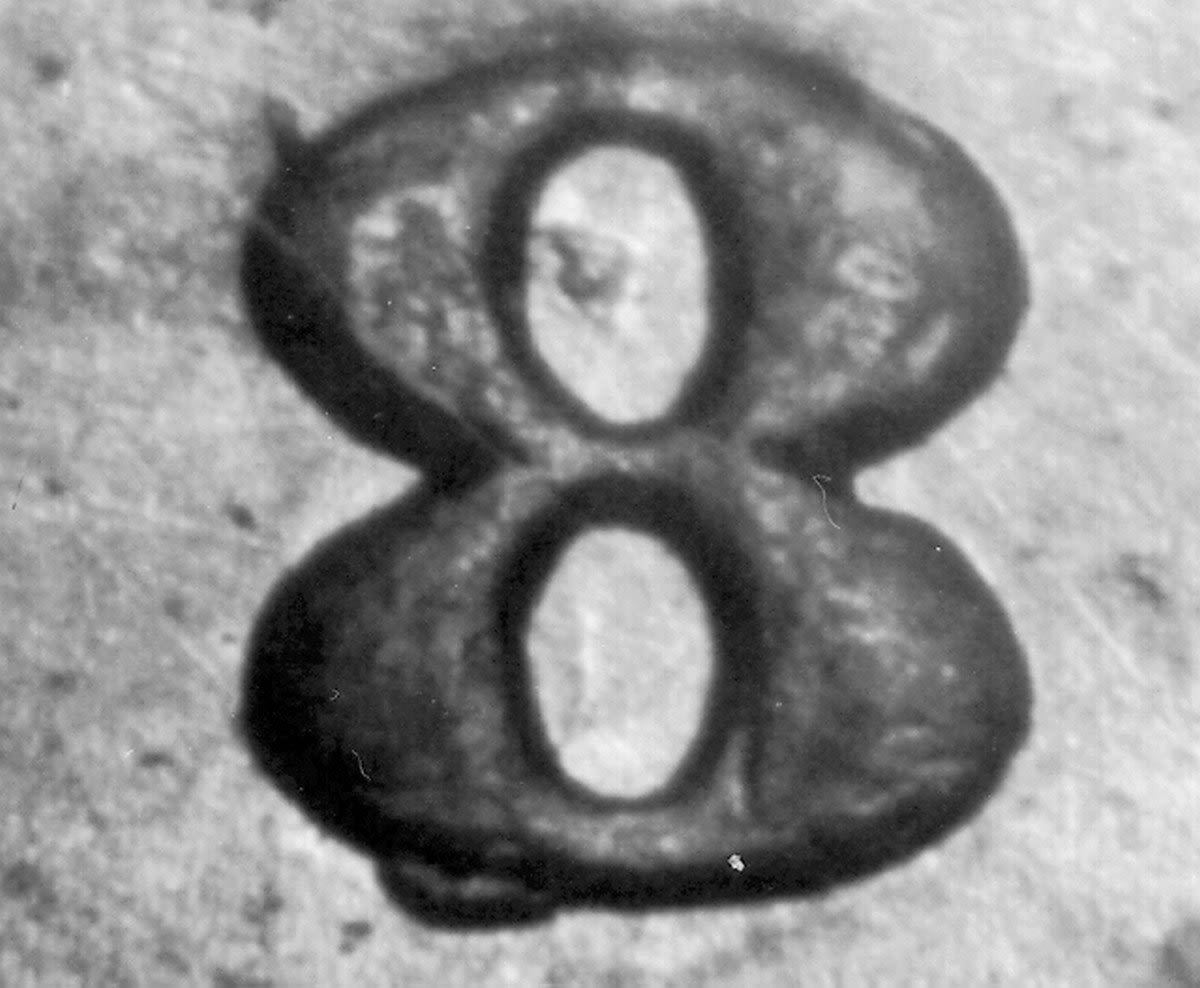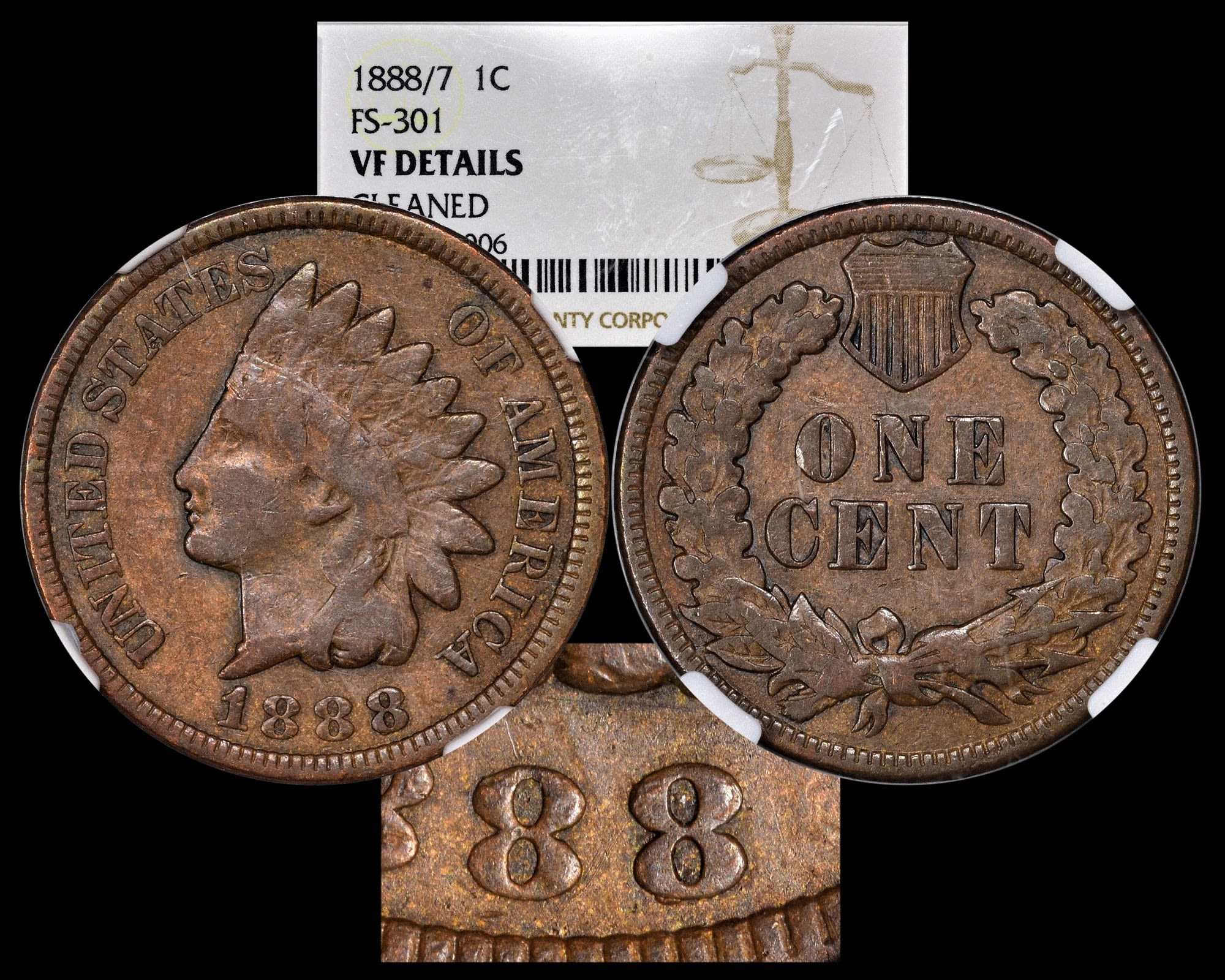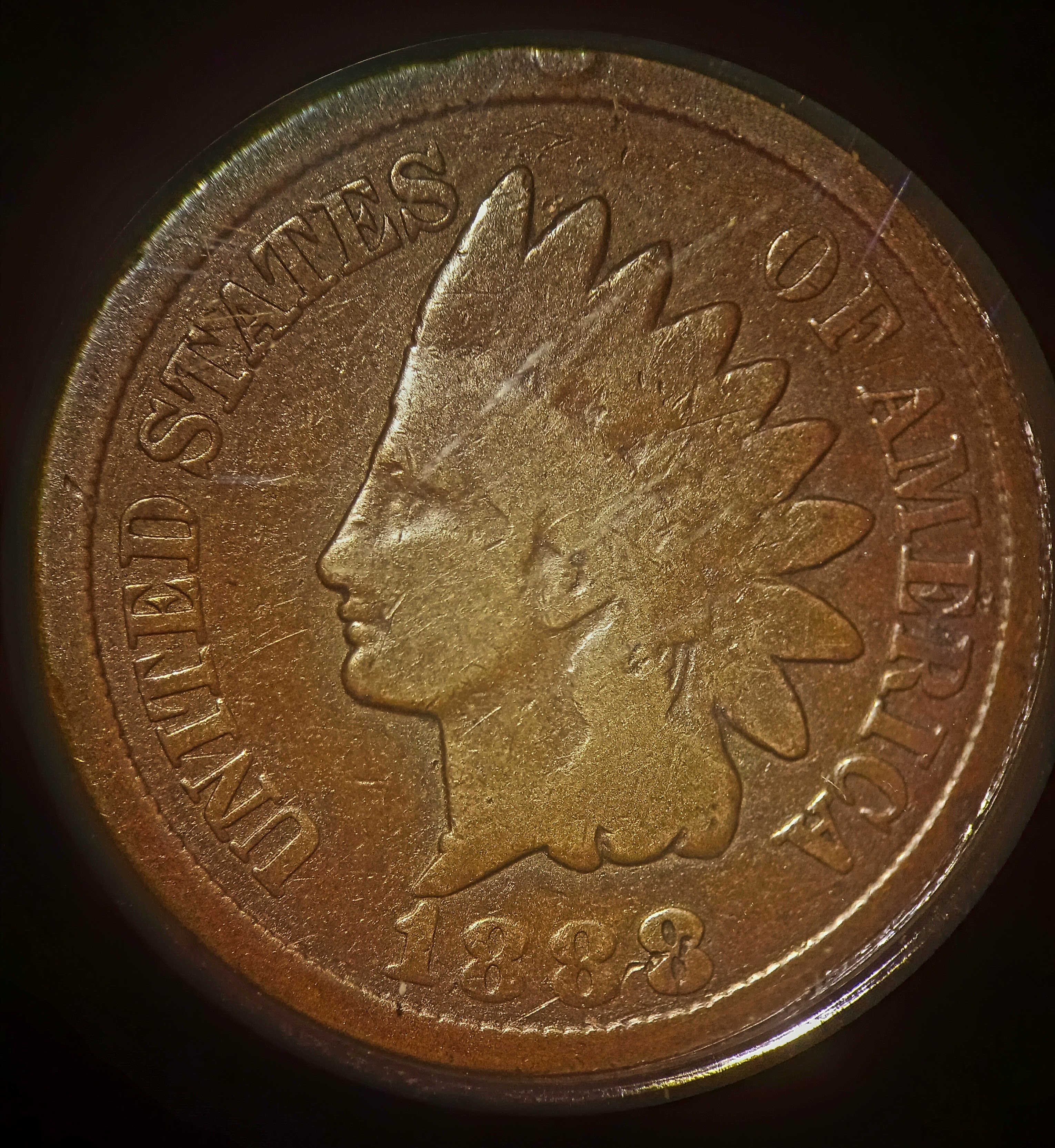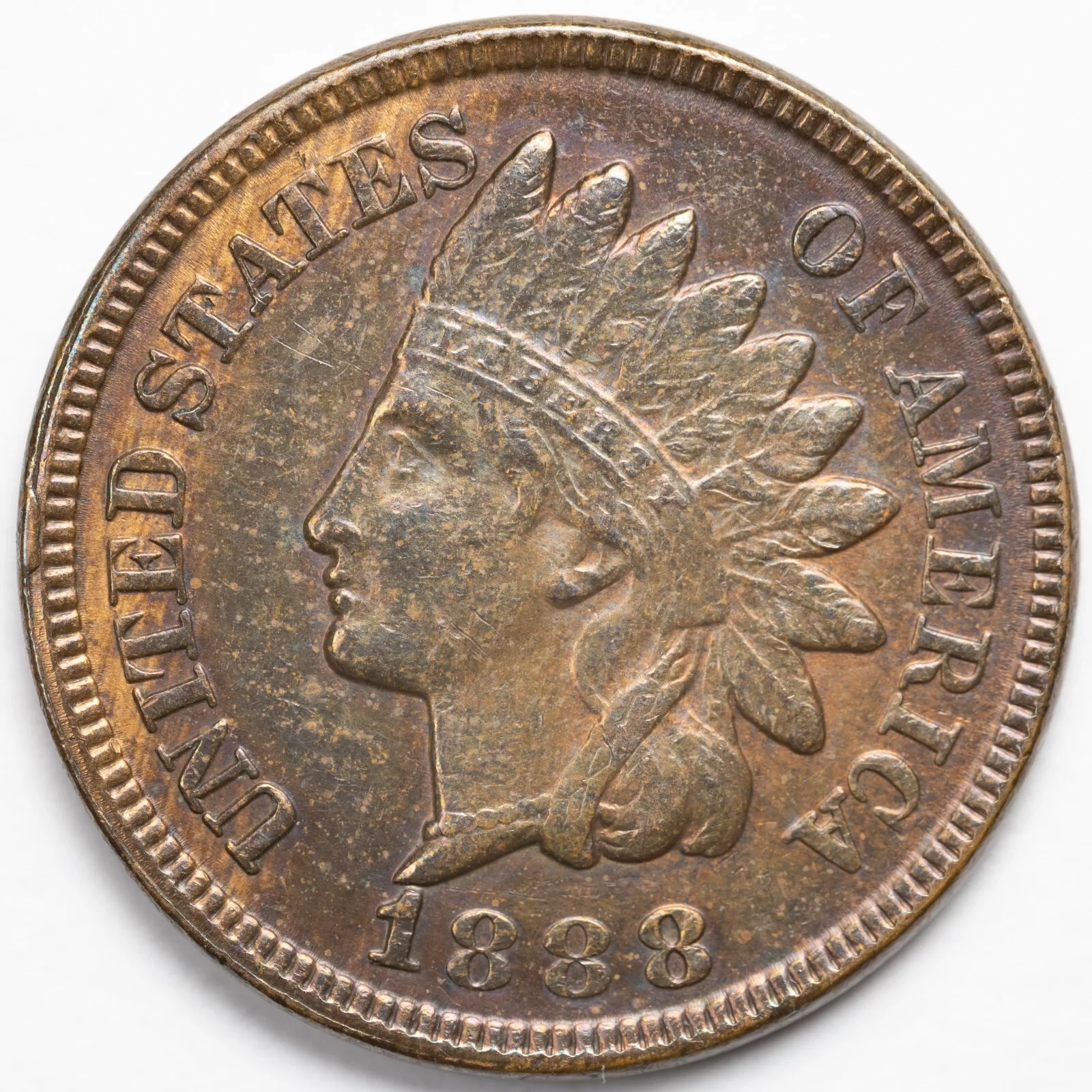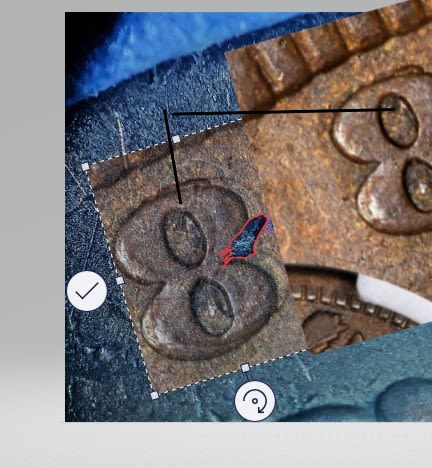The truth of 1888 last 8 over 7
1888 Indian head cent working die set #1
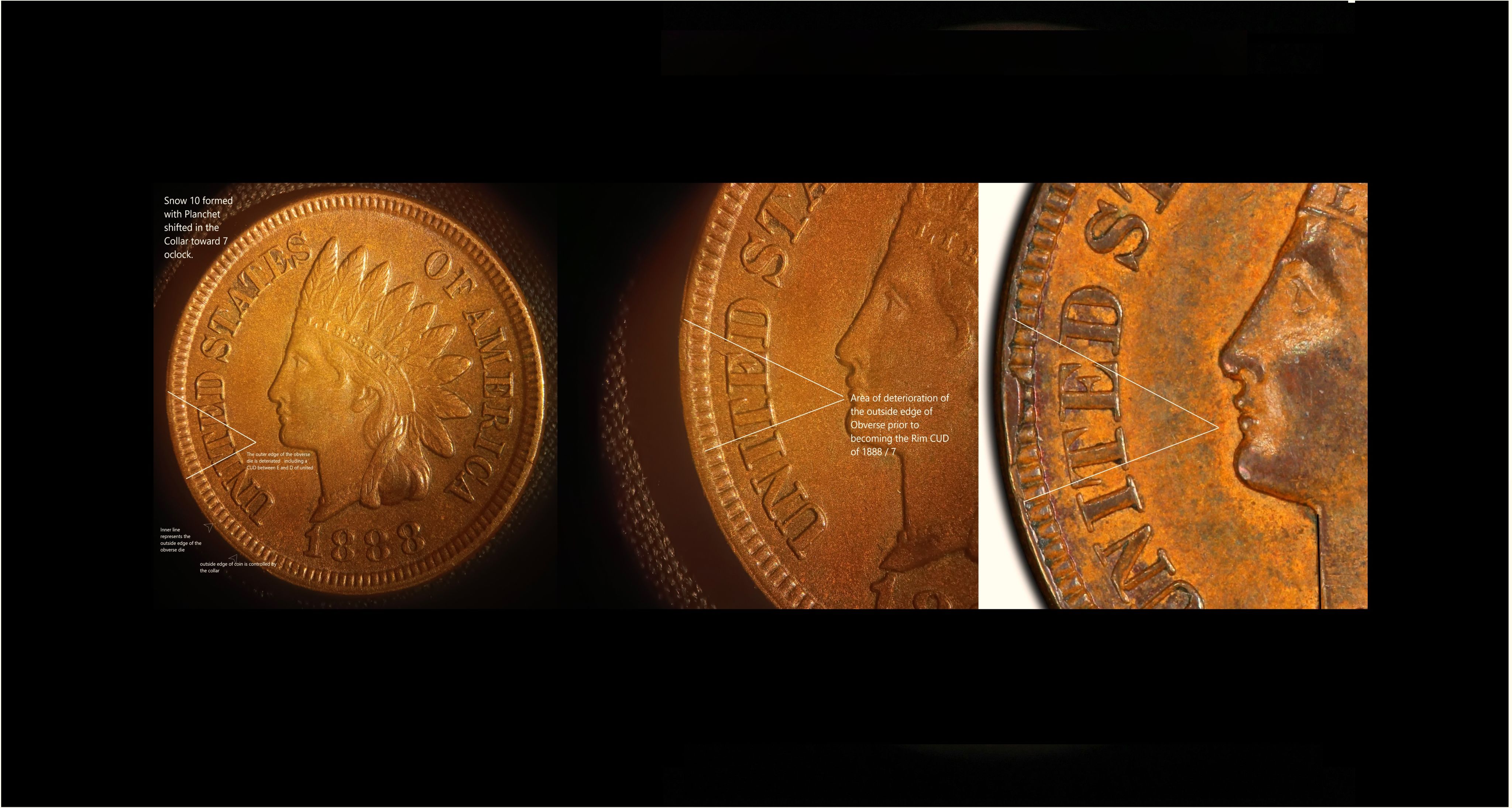
They had to know it was an 8 over 8
They had no way to explain the nub under the final 8 and ignored an attribute in the bottom loop of the final 8 that would have qualified any Re-punched date variety
It was on an MS64 RB coin
It was on a cleaned VF version
The recorded event
Snow 10s CUD
Snow 1s CUD
The truth of 1888/7 is far more interesting than any overdate. It was actually from an event that all of the hobby's historical experts to whom I have reached out, will argue against.
A Morgan & Orr press with Benjamin Franklin Peele's friction plate was forced to open its fingers by a jammed planchet in its feeder tube stranding a finished coin on the die. The press continued to run, moving now open fingers back and forth while the operator was manually slowing the press with its brake lever.
As the press was slowing to its final 3 strikes, a piece of spring from the finger broke and landed across the final 8 of 1888 (source of the nub), breaking the dies inner 8 punch, followed by more die damage on the next strike and one last strike that pushed the 2 broken die chips into the coin that was stuck on the die.
The truth is that the tool room of the US mint repaired this heavily worn variety die (Snow 10) with an already formed CUD and its damaged 3rd 8.
The method of repair was to re-basin until the majority of the date was removed and re-hub accidently one denticle clockwise.
The small test run sample that failed, created a highly rare error incorrectly known as 1888 last 8 over 7.
It is (1888 over broken 1888 Snow 10).
